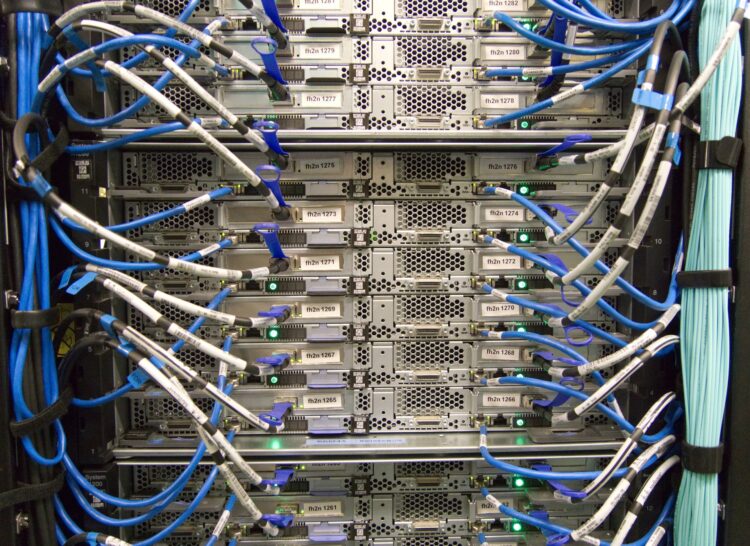The data center industry currently accounts for approximately 1% of the planet’s power consumption according to a report by Data Center Knowledge. As the demand for data centers increases, the data center industry has to become more mindful of their carbon footprint and find more sustainable ways of designing data centers that are both good for business and the environment.
Michael Goh, VP and regional general manager of the data center business for Iron Mountain in the Asia Pacific, talks about the desire for data centers to be more sustainable and what the future will be like for the industry.
Can you describe the state of the data center business or those in operation in Asia?
Michael Goh: If you follow a data center potentially we used to be saying that a 1-megawatt data center is huge. One cabinet of 2 kilowatts was quite high 20 years ago. This year things changed. We are talking about 100 megawatts campuses, and 200 megawatt campuses. So that generates a lot of heat and that needs a lot of power. It is going to take a lot to cool down. By inflection point, we have reached a point at the traditional design of data headsets are not able to cater for this anymore.
If we look at the data centers in 2023, what are the most critical or the top issues that are important to operators of data centers?
Michael Goh: I think 1st, you must have power. Second, access the renewable power. We want to be carbon neutral by 2030 or 2040. It is also driven by our customers.

The biggest challenges that I see the industry going through are that we all have that ambition to reach this carbon neutrality goal, but the actual thing, the actual work on the ground has not reached the space where we can naturally get carbon-renewable power or carbon-free power.
Michael Goh
Power is relatively cheap. Renewable power will put a price premium on top of it. Customers are starting to understand that they need to pay more. It is more for our overall contribution to society and the environment as well.
The important part now is to have access to power and come up with a new design for this new wave of requirements that is driving up the whole capacity. We need to have a new design that can do that. It does not mean that it is just construction. It is also about operation. We need to know how to operate at such high temperatures. We need to be able to be able to maintain such high power requirements.
What do you see will be the future of the data center in the coming years?
Michael Goh: The industry has grown so fast and the way to address it is looking for alternative processes, systems, and technologies where we rely on manpower, to maintain an automated system and operate a data center 24/7. There must be a balance. You cannot have mechanical people there every 24 hours.
As organisations follow a hybrid compute model—mixing in-house and external cloud—what is the best data center strategy for them?
Michael Goh: The best way is to see the need to know what is the most critical for them in terms of systems.
They also need to think about the cloud. It is no longer just something that you put non-critical systems but as something that can increase reach, and performance.
Put the applications that you think are correct and you should not put sensitive data on the cloud. For the non-sensitive data, I think you can put the data or critical data in the cloud.
How should CIOs/CTOs revisit their current data center services needs for the future?
Michael Goh: Our goal is to be certified to be using renewal power so that it does not add to the corporate carbon footprints. Few operators can do that. It is a non-negotiable now for operators to be able to provide renewable power to our customers, unlike 5-10 years ago when data centers did not know any providers advanced in that.
We, as an industry, know that this is important. So, instead of running away from it, we are coming up with a solution. We allow operators to come up with innovative solutions to reduce carbon footprints.
How will constraints like regulatory concerns, like data sovereignty or data privacy, and opportunities such as digitalisation and digital transformation change the operation of the data centers?
Michael Goh: It has not changed. It is going to have more and more. It will not concentrate in one place like Hongkong, or Japan; it is going to be everywhere now.
On one hand, you would think that we should be consolidating, but on the other hand, because we do, we need more of these, and we are starting to see a lot more. I think data centers manage our power more efficiently. Then, for example, if you host your server, they have multiple server rooms in your office, that is not going to be efficient. We are talking about consolidating but talking about the scale is different. It is not that we are not consolidating.
The data centers are getting bigger and bigger and the demand has been exponentially higher. The hunger for these data centers will not be reducing anytime soon by the way we consume data, and use our mobile phones. The data center requirement is not just going down. It is just going to explode.





